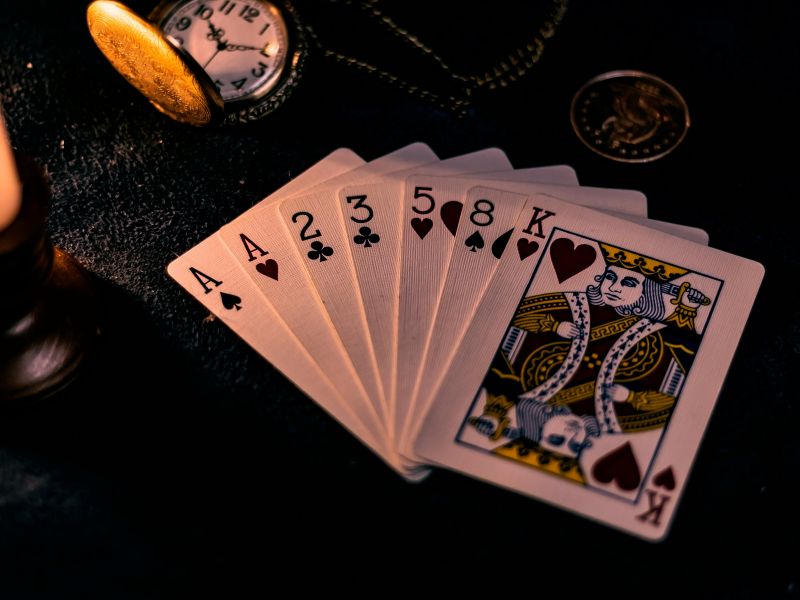Double Deck Blackjack Strategy: Guide to Beating the Odds
Double deck Blackjack isn’t just about luck, with the right strategy, you can take control and turn the odds in your favor. Are you ready to unlock the secrets to maximizing your chances of winning and beating the dealer? In this guide, I’ll walk you through everything you need to master Double Deck Blackjack Strategy, from essential tips for beginners to advanced techniques like card counting. Let’s dive in and give you the edge you’ve been looking for!
The Double Deck Blackjack strategy will help you optimize your winning chances
What is Double Deck Blackjack
Double deck Blackjack is a popular variation of the classic game, played with only two decks of cards instead of the six or eight used at standard Blackjack tables.
This setup benefits players by reducing the house edge and making strategies like card counting more effective. However, it also comes with some drawbacks, such as higher minimum bets and stricter table rules.
Here’s a quick breakdown about pros and cons double of deck blackjack:
Pros | Cons |
|
|
If you’re looking for a game that rewards skill and strategy, Double Deck Blackjack is a strong choice. The low house edge and fair payouts make it appealing, but keep in mind the higher betting requirements and limited seating. If you enjoy a challenge, this could be the perfect variation for you!
Double Deck Blackjack Strategy
Double Deck Blackjack offers unique opportunities for strategic play. To get the most out of the game, it’s important to adjust your approach based on whether the dealer stands or hits on soft 17.
Strategies for Double Deck Blackjack - Dealer Stands on Soft 17
When the dealer stands on soft 17, your decisions become slightly more straightforward, but understanding when to hit, stand, double down, or surrender is still critical. Let’s explore the optimal moves for this scenario.

Hard Hands:
- 4-8: Always Hit.
- 9: Double if allowed against Dealer’s 3-6; otherwise, Hit.
- 10: Double if allowed against Dealer’s 2-9; otherwise, Hit.
- 11: Double if allowed against Dealer’s 2-10; otherwise, Hit.
- 12: Stand against Dealer’s 4-6; otherwise, Hit.
- 13-14: Stand against Dealer’s 2-6; otherwise, Hit.
- 15: Stand against Dealer’s 2-6; Surrender if allowed against 10; otherwise, Hit.
- 16: Stand against Dealer’s 2-6; Surrender if allowed against 9, 10, or Ace; otherwise, Hit.
- 17-21: Always Stand.
Soft Hands:
- A,2 (13): Double if allowed against Dealer’s 5-6; otherwise, Hit.
- A,3 (14): Double if allowed against Dealer’s 5-6; otherwise, Hit.
- A,4 (15): Double if allowed against Dealer’s 4-6; otherwise, Hit.
- A,5 (16): Double if allowed against Dealer’s 4-6; otherwise, Hit.
- A,6 (17): Double if allowed against Dealer’s 3-6; otherwise, Hit.
- A,7 (18):
- Double if allowed against Dealer’s 2-6.
- Stand against Dealer’s 7-8.
- Hit against Dealer’s 9, 10, or Ace.
- A,8 to A,10: Always Stand.
Pairs:
- 2,2 and 3,3: Split against Dealer’s 2-7; otherwise, Hit.
- 4,4: Split if allowed to double after split against Dealer’s 5-6; otherwise, Hit.
- 5,5 (10 total): Double if allowed against Dealer’s 2-9; otherwise, Hit.
- 6,6: Split against Dealer’s 2-6; otherwise, Hit.
- 7,7: Split against Dealer’s 2-7; otherwise, Hit.
- 8,8: Always Split.
- 9,9:
- Split against Dealer’s 2-6 and 8-9.
- Stand against Dealer’s 7, 10, or Ace.
- A,A: Always Split.
Find out more about surrender rules at this post!
Double Deck Blackjack Strategy - Dealer Hits on Soft 17
When the dealer hits on soft 17, your strategy needs a few changes. The dealer has a better chance of improving their hand, so you need to adjust your decisions carefully.
The Dealer Hits on Soft 17 chart helps you make better decisions when splitting cards

Hard Hands (No Ace in the Hand):
- 4-8: Always Hit (H).
- 9: Double (Dh) against Dealer’s 3-6; otherwise, Hit (H).
- 10: Double (Dh) against Dealer’s 2-9; otherwise, Hit (H).
- 11: Always Double (Dh) unless the Dealer shows Ace (then Hit).
- 12: Stand (S) against 4-6; otherwise, Hit (H).
- 13-14: Stand (S) against 2-6; otherwise, Hit (H).
- 15: Stand (S) against 2-6; surrender if possible (Rh) against 10 or Ace; otherwise, Hit (H).
- 16: Stand (S) against 2-6; surrender (Rh) against 9, 10, or Ace; otherwise, Hit (H).
- 17: Always Stand (S), except Surrender (Rs) against Ace.
- 18-21: Always Stand (S).
Soft Hands (Containing an Ace):
- A,2 (13): Double (Dh) against Dealer’s 5-6; otherwise, Hit (H).
- A,3 (14): Double (Dh) against Dealer’s 5-6; otherwise, Hit (H).
- A,4 and A,5 (15-16): Double (Dh) against Dealer’s 4-6; otherwise, Hit (H).
- A,6 (17): Double (Dh) against Dealer’s 3-6; otherwise, Hit (H).
- A,7 (18):
- Double (Ds) against Dealer’s 2-6.
- Stand (S) against 7-8.
- Hit (H) against 9, 10, or Ace.
- A,8 and A,9: Always Stand (S).
Pairs (Split Strategy):
- 2,2 and 3,3: Split (P) against Dealer’s 2-7; otherwise, Hit (H).
- 4,4: Split (Ph) if allowed to double after split against Dealer’s 5-6; otherwise, Hit (H).
- 5,5: Double (Dh) against Dealer’s 2-9; otherwise, Hit (H).
- 6,6: Split (P) against Dealer’s 2-6; otherwise, Hit (H).
- 7,7: Split (P) against Dealer’s 2-7; otherwise, Hit (H).
- 8,8: Always Split (P).
- 9,9:
- Split (P) against Dealer’s 2-6 and 8-9.
- Stand (S) against 7, 10, or Ace.
- A,A (Pair of Aces): Always Split (P).
Card Counting in Double Deck Blackjack (Simplified for Beginners)
Card counting helps you track the ratio of high cards (10s, J, Q, K, A) to low cards (2 - 6) left in the deck, so you can adjust your bets and decisions. Here’s how to count cards in Double Deck Blackjack:
Step 1. Use the Hi-Lo System (Simple Counting Method)
- Assign these values to the cards:
- +1: Low cards (2, 3, 4, 5, 6).
- 0: Neutral cards (7, 8, 9).
- -1: High cards (10, J, Q, K, A).
- As cards are dealt, add or subtract these values to keep a running count in your head.
Step 2. Adjust for the Double Deck
Divide the running count by the number of decks remaining to calculate the true count.
Example: If the running count is +4 and there’s 1 deck left, the true count is +4. If there are 2 decks left, the true count is +2.
The true count is more accurate because Double Deck games have fewer cards in play compared to multi-deck games.
Step 3. How to Use the Count
High True Count (+2 or more):
- Bet higher because more high cards (10s, Aces) increase your chance of getting a Blackjack or beating the dealer.
- Use basic strategy adjustments like standing on 16 vs. a dealer’s 10 or doubling down more often.
Low True Count (0 or below):
- Bet smaller because the dealer has a better chance of winning with more low cards left.
- Play conservatively, sticking strictly to basic strategy.
Step 4. Practice First
Use a single deck at home to practice counting cards. Shuffle, flip cards one by one, and keep a running count to improve your speed and accuracy.
Tips for Beginners
- Casinos don’t like card counters. Act casual and avoid drawing attention.
- Practice counting first before increasing your bets in real games.
- Combine card counting with basic strategy for the best results.
- Focus only on the count (+1, 0, -1) instead of trying to remember specific cards.
Things to Note for Counting in Double Deck Blackjack:
- Count changes faster: Fewer cards mean the count shifts quickly. Stay focused and calculate after every hand.
- Betting strategy: Use a smaller betting spread (e.g., 1-6 or 1-8). Gradually increase bets to avoid detection.
- Penetration: Aim for 60 - 75% of the deck to be dealt before reshuffling for better odds.
- Playing multiple hands: Play extra hands to wager more discreetly. Use this sparingly to avoid attention.
- Managing risks: Avoid obvious behavior like staring at cards or big bet jumps. Take breaks, rotate tables, and follow casino rules.
Important Rules and Tips When Playing Double Deck Blackjack
Let’s explore some important rules and tips that work together to give you a better chance at success.
Here are the rules and tips when play double decks blackjack designed for you
Rules to Keep in Mind:
- Tables with a 3:2 payout: When you play, tables with a 3:2 payout are much better than those offering 6:5. The 3:2 payout lowers the house edge and gives you better returns over time, making a noticeable difference.
- Favorable table rules: Tables where the dealer stands on soft 17 (S17), doubling after splitting (DAS) is allowed, and re-splitting aces (RSA) is permitted work to your advantage. These rules improve your chances and make the game fairer for you.
- Penetration levels: When you’re playing, tables that deal at least 50% of the cards before shuffling are a better choice. If you find a table with 60% or more penetration, it gives you even more chances to use the count in your favor.
Important tips for you:
- Managing your bankroll: When you play, having a clear budget helps you stay in control. Playing within your limits ensures you won’t risk more than you can afford, keeping the game enjoyable.
- Counting cards subtly: If you use card counting, subtle changes in your bets help you avoid attention. Gradual adjustments make it less likely that dealers or staff notice your strategy.
- Sticking to basic strategy: Following basic strategy helps you avoid mistakes and stay logical. Even if a move feels counterintuitive, using the strategy ensures better long-term results by keeping emotions out of your decisions.
Double Deck Blackjack offers you great opportunities if you understand the rules and strategies. From my experience, choosing tables with favorable rules and keeping your play subtle makes a big difference in the long run.
But like any skill, it takes practice to get better. I’ve found that being patient, managing your bankroll carefully, and trusting the strategy not only improve your results but also make the game more enjoyable for you. If you’re ready to learn more, stick around, I’ll be sharing tips and strategies for other exciting blackjack variations in future posts. Let’s keep improving together!















